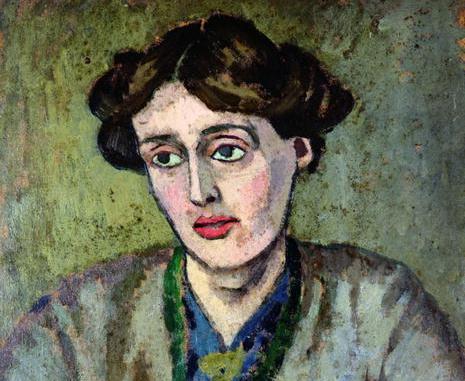The Modernist Period

The ambition of the period was to transform literature into something new. Modernism was not limited to literature; we also find modernism in art and architecture from the same period.
The Industrial Revolution had created a brand-new world in which opportunities seemed limitless. Then came the devastations of World War I, which cost the lives of millions of young people and caused widespread destruction. The traditional forms of writing seemed inadequate to capture this time of progress, upheaval, and devastation. Fragmented storytelling became a way to describe a fragmented existence. Modernist writers often used numerous points of view in the same story.
The world was forever changing, so the focus turned inwards, to an exploration of the self. Stream of consciousness was a narrative mode that attempted to capture and set down on paper the many impressions, thoughts, and feelings that pass through a person's mind at any given time. James Joyce and Virginia Woolf are especially known for their use of stream of consciousness. Here is an excerpt from James Joyce's Ulysses. Study the excerpt, and try to explain how stream of consciousness is used.
Excerpt from Ulysses by James Joyce
— Can you do them yourself? Stephen asked.
— No, sir.
Ugly and futile: lean neck and tangled hair and a stain of ink, a snail’s bed. Yet someone had loved him, borne him in her arms and in her heart. But for her the race of the world would have trampled him underfoot, a squashed boneless snail. She had loved his weak watery blood drained from her own. Was that then real? The only true thing in life? His mother’s prostrate body the fiery Columbanus in holy zeal bestrode. She was no more: the trembling skeleton of a twig burnt in the fire, an odour of rosewood and wetted ashes. She had saved him from being trampled underfoot and had gone, scarcely having been. A poor soul gone to heaven: and on a heath beneath winking stars a fox, red reek of rapine in his fur, with merciless bright eyes scraped in the earth, listened, scraped up the earth, listened, scraped and scraped.
Sitting at his side Stephen solved out the problem. He proves by algebra that Shakespeare’s ghost is Hamlet’s grandfather. Sargent peered askance through his slanted glasses. Hockeysticks rattled in the lumberroom: the hollow knock of a ball and calls from the field.
Across the page the symbols moved in grave morrice, in the mummery of their letters, wearing quaint caps of squares and cubes. Give hands, traverse, bow to partner: so: imps of fancy of the Moors. Gone too from the world, Averroes and Moses Maimonides, dark men in mien and movement, flashing in their mocking mirrors the obscure soul of the world, a darkness shining in brightness which brightness could not comprehend.
— Do you understand now? Can you work the second for yourself?
— Yes, sir.
In poetry, traditional stanzas and rhyme structures were rejected. Read the poem 'In a Station of the Metro' by Ezra Pound. Discuss with a partner: What makes this a modernist poem?
In a Station of the Metro
The apparition of these faces in the crowd:
Petals on a wet, black bough.
T.S. Eliot's poem 'The Waste Land' has many of the characteristics of modernist poetry: there are many points of view, it weaves together different narratives, and changes quickly from one topic to the next without any markers to indicate to the reader what the poem is about or where the narrative is headed. The poem was written after World War I, and it reflects the feelings of disillusionment that many people felt at that time. You can read 'The Waste Land' by following this link.
Link to 'The Waste Land' by T.S. Eliot on poets.org
Modernist writing is characterised by inventiveness. The works challenge and engage the readers, which may have contributed to their lasting popularity.